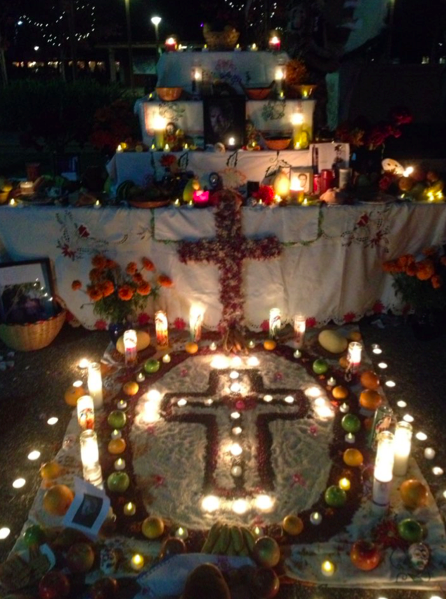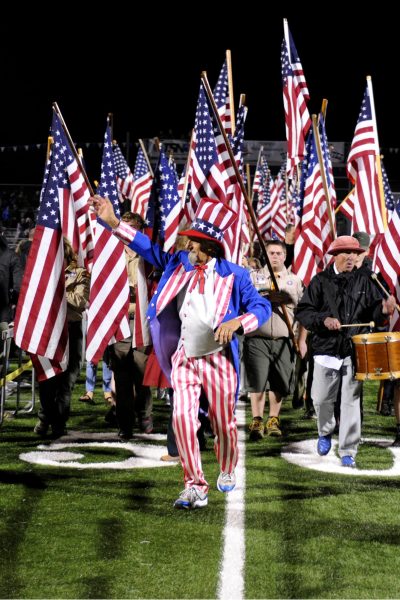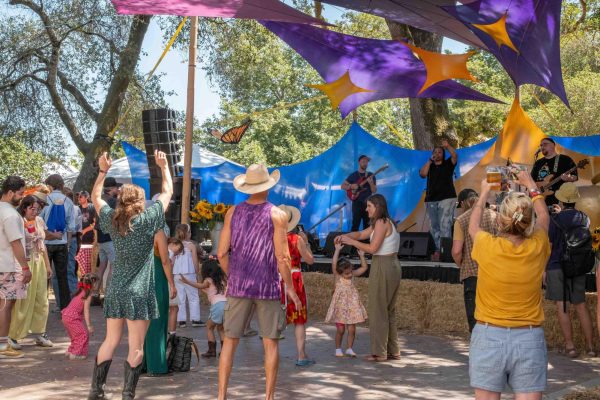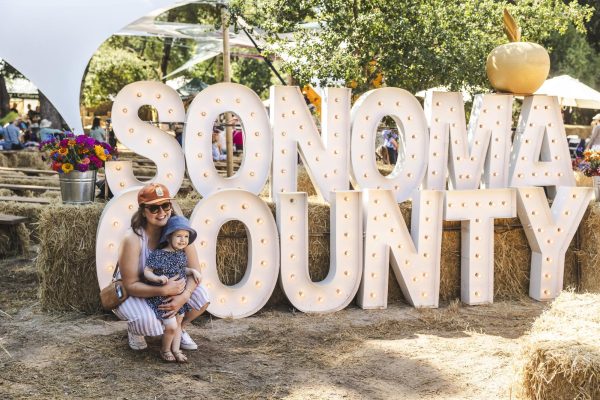Day of the Dead

A tradition rooted in the heart of Mexico, the Day of the Dead has been kept alive since before the arrival of the Spaniards. More than 500 years ago, the Conquistadors had landed in the innermost part of Mexico where they soon found natives practicing a ritual that seemed to have taunted death. The indigenous people of Mexico had performed this practice for over 3,000 years. Now, the Day of the Dead is practiced all over Latin America as well as some places within the United States. Since the Day of the Dead has lasted for so long, it now contains some practices of Catholicism as well as ancient practices done by the Aztecs. For example, the usage of skulls had come from the Aztecs as an offering to those that had crossed over. The Catholic side is represented through the prayers done for the relatives as well as the religious figures placed on the graves or altars.
This day of remembrance is celebrated in November. November 1st, known as “Day of the Innocents” or “Day of the Little Angels,” is dedicated to all the children that have passed away. The families that have lost their children gather at the graveyard or altar to offer them toys, bread, candy, and flowers. Photos are placed on the altar while prayers are recited for their children. The belief is that on this day, the spirits of all the children that have left this world return to reunite with their families. The second day is then dedicated to the adults that have passed on in which it is known as Day of the Dead. During this day the families gather around their altars or visit the graves once again to offer drinks, food, and the favorite objects of the ones that have passed. It’s a day of celebration since music is played in which songs are dedicated to and dances are performed in honor of them. Some also bring musical groups as a gift for their relatives. Though in order to do these dedications or give any offerings, an altar or set up is made for the dead.
One of the most famous aspects of Day of the Dead is the altar, covered with vibrant colors, decorations, and elaborate foods. As with any tradition the set up is the most important. The altar has a meaning, by which each object placed on it has its purpose. The base of the altar, also known as its levels, represents the divisions of the world. Two levels represent the earth and the sky, the elements, and the products of the land. Three levels represent the underworld, earth, and sky, taken by Aztec belief, while in Christianity the three levels represent the Holy Trinity of the Son, the Father, and the Holy Spirit. The most common are the seven levels, in which they represent the seven levels that the soul must cross in order to reach heaven. The arches, placed above the altar, are made out of flowers or offerings to represent the entrance into the world of the dead. The tissue paper placed around the altar signifies the bond made between life and death.
The spiritual part of the altar is the burning incense, also known as copal, as a means of purification for the soul and to ward off any evil present. Salt is also given to stop the soul from being sinful of earthly temptations. Water is then presented for the spirits to satisfy their thirst and strengthen them for their return. The light, through candles, represents the path the spirits must take in order to reach their destination. The flowers, such as the cempasúchil or marigolds, are also used as a guide for the spirits present in the mortal world due to their sent. Baby’s breath, to attract the children, represents purity and tenderness, while purple flowers are the mourning color in Mexico. Sugar skulls, or calaveras, are a symbol of the deceased in which they are often edible for the children after the celebration. Finally the food is presented for the dead to enjoy. The deceaseds’ favorite foods are brought out to the altar as well as traditional foods such as Pan de Muerto.
This day of commemoration has turned into a well-known holiday all over the world. Traces of this holiday can be found on shirts through the prints of elaborate skulls or as to pictures of La Catrina, Mexico’s lady of death created by José Guadalupe Posada. In all this day is a day of celebration and respect that is heavy in tradition as well as its history.




